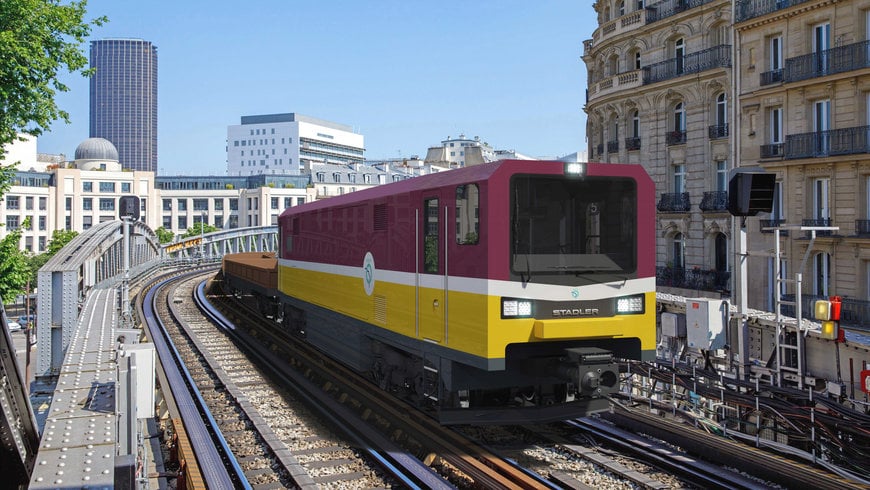Customised Stadler locomotives for the Paris metro
Régie autonome des transports Parisiens (RATP), operator of the Paris Metro, is ordering twelve locomotives from Stadler.
stadlerrail.com

Powered by battery, they underscore Stadler’s commitment to providing sustainable and flexible solutions. They will undertake service, maintenance and repairs on the entire RATP network and be introduced into passenger service from 2027.
The Paris metro operator, Régie autonome des transports Parisiens (RATP), has commissioned Stadler to manufacture and supply twelve customised locomotives. This is the first order that Stadler has received from RATP. The signed framework agreement includes an option for two further vehicles. RATP will use the locomotives to carry out service, maintenance and repair work on the infrastructure of the Paris Metro network, which is approximately 245 kilometres long.
One locomotive for all lines
The new locomotives are part of an RATP project aimed at making the maintenance of the metro infrastructure more streamlined and more efficient. They will complement the existing generation of vehicles from 2027.
The four-axle locomotives are 15 metres long, equipped with fully automatic couplings and capable of double traction. They run on the standard gauge and are designed to accommodate the tight curves that characterise this network.
These locomotives can be used on all 14 lines of the Paris Metro. This includes the routes which trains with conventional steel wheels run and on those used by vehicles with rubber tyres (Pneu-Metro).
Efficient, battery-electric drive
The RATP locomotives haul heavy work trains to construction sites on the metro's rail network. They are authorised to operate in parallel with normal metro services, as well as on the routes operated without drivers. They pull around 120 tonnes in single traction and around 240 tonnes in double traction.
The new locomotives are flexible in use, low-maintenance and environmentally friendly. Their high level of redundancy means that they are both very safe and very reliable.
This is especially important for operation in tunnels parallel to metro traffic and on construction sites.
In battery-electric drive, energy is transmitted to the vehicles via the pantograph or by using on-board traction batteries. In normal operation, the conductor rail supplies the electrical energy of 750 V.
On construction sites, where the conductor rail is switched off, the locomotives are powered by traction batteries. These are then recharged through the conductor rail. Reliable maintenance organisation
RATP is the third-largest urban transport operator in the world, carrying 11 million passengers every day. "We are very proud to have won RATP as a customer and to have impressed them with our technology," says Christian König, Deputy Head of Sales & Marketing at Stadler. "With our innovative, customised locomotives, efficient and sustainable maintenance can be realised and the infrastructure of the Paris metro can be made fit for the future." RATP is not the only railway operator in France to has commissioned Stadler locomotives. The EuroDual, Euro4001 and Euro6000 six-axle high-performance locomotives were all manufactured at the Stadler plant in Valencia, Spain, and are today successfully used by various operators in the rail freight sector in France, Belgium and Spain.
www.stadlerrail.com

